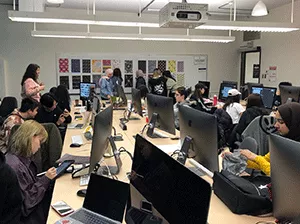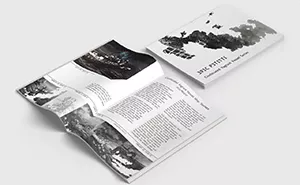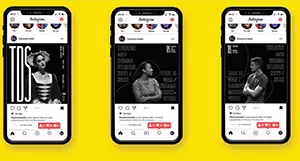Design
The Design course is intended to familiarize students with the basic elements of design through exposure to the Adobe CC as well as After Effects and web design using the Wix platform. The four-year program covers aspects of typography, colour, composition, page layout, identity and branding with a grounding in design history. Students are given a variety of design problems, each drawing on distinct conceptual and technical skills.
General Objectives
- to encourage individual expression
- to help students develop critical skills through written and oral critiques
- to ensure students acquire the technical and formal vocabulary necessary to articulate design concepts and engage in constructive criticism of design work
- to ensure familiarity with design terms and principles
- to ensure students acquire the technical and aesthetic skills necessary to pursue further studies in graphic design, digital media, fine art or curatorial practice
Design 1
Course Objectives

This course is intended to introduce students to the basic elements, procedures and terminology of graphic design. Students will learn how to use the expressive qualities of words, colours, composition as well as imagery and to combine all of these elements in effective conceptual solutions to unique design problems. Creative experimentation is encouraged to broaden students' conception of design and its application in other design and art related disciplines.
Course Structure
Students will complete 6 major projects and 10 in lab smaller lab projects in class. Each class will be a combination of class instruction and individual assistance with projects. All projects are discussed together in a lively critique.
Course Content
The Adobe CC (Illustrator, PhotoShop and InDesign) will be introduced in this course. The basic functions of each software application will be covered allowing students to use the Adobe CC in their own art and design projects. The elements and principles of graphic design such as type, colour, line, shape, balance, contrast and hierarchy will also be discussed and demonstrated through illustrated presentations.
Design 2
Course Objectives
The aim of this course is to ensure proficiency in the tools of design including Adobe CC (Photoshop, InDesign and Illustrator). This course will also introduce students to some of the factors affecting design decisions such as material format, intended audience and historical associations. Students will be exposed to technical and conceptual design terms used in both design and art. Students should develop a recognition of the elements of effective and innovative design solutions.
Course Structure
Each class will consist of a combination of major projects and in-class labs (smaller projects), presentations, demonstrations and one-on-one discussions of student work.
Course Content
All projects and most in-class labs require students to use Adobe CC (Photoshop, InDesign and Illustrator). Emphasis will be placed on using InDesign for its capabilities with producing layouts that combine text and images to create posters, presentations, brochures and books.
Design 3
Course Content

The three computer design programs in Adobe CC will be covered: Photoshop, InDesign and Illustrator as well as an introduction to After Effects and web design using the Wix platform.
Course Objectives
This course is intended to give students a comprehensive understanding of the importance of design in effective communication. The skills learned in Design 3 could be applied to further studies in design, digital media, art and curatorial practice or teaching. At the end of this course, students should have a good grasp of graphic design principles, terminology and practice.
Course Structure
This course incorporates lectures, group critiques, partnered learning and individual discussion with the instructor. Students complete three projects in both the first and second terms. Each project is critiqued and evaluated at several stages. Some projects are interdisciplinary, but all are designed to approximate those encountered by professional designers. Students may be given design assignments that require them to collaborate with other Sheridan departments, as well as to create full or partial design mock-ups, and make individual or team presentations. A high level of class participation in critique is expected.
Course Content

All assignments require students to use Adobe CC (Photoshop, InDesign and Illustrator). Students are taught printing and mock-up techniques that meet current industry standards, and are asked to create real-world solutions to existing design problems. Students enter design competitions, visit artist’s studios and produce a self-promotional web-site and motion graphics for their year-end project.
Design 4
Course Objectives
The objective of this course is to bring all facets of design practice together from conceptual development, proposal writing, research, design development, project and production management, and production implementation to produce actual design-based projects. Students will incorporate formal aspects of design such as composition, colour, typography, layout, imagery, and visual storytelling with the Adobe CC tools that best serve the conceptual goals and production parameters for each project. Students may be required to engage outside production expertise to realize aspects of their projects.
Class Structure
Students work on large scale, multi-faceted projects that have specific client requirements and deadlines. Projects involve working independently and collaboratively in weekly design-studio based meetings, guided by the instructor. Workback schedules for projects and interim deadlines are established collectively for projects to meet production deadlines and for interim student evaluations. Students are required to consider all aspects of the project, from concept, through production, though marketing and publicity of their projects via various print and digital channels. Students will research ways to implement aspects of their projects and will be communicating directly with production suppliers to realize their projects. There will be a high level of collaboration, group critique and discussion and professionalism in the class.
